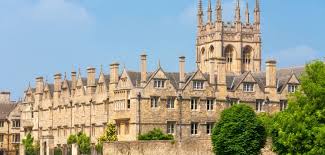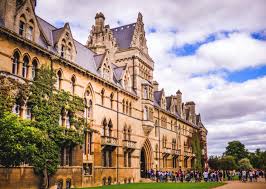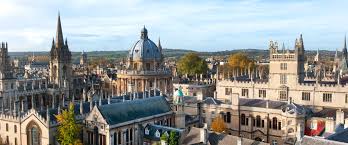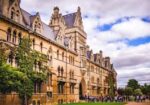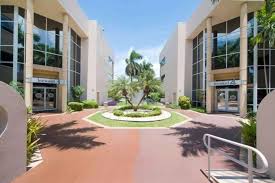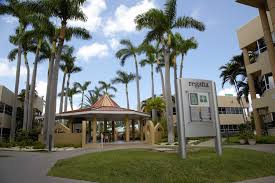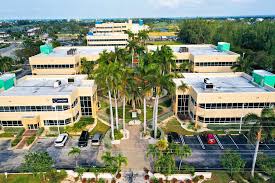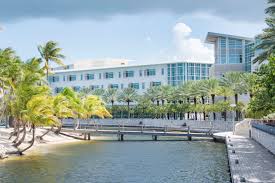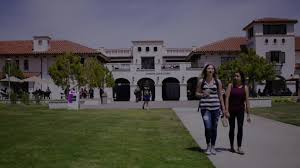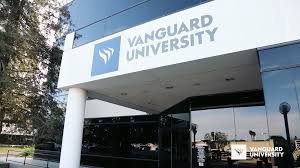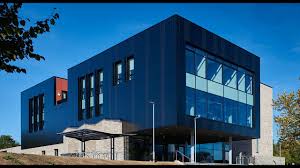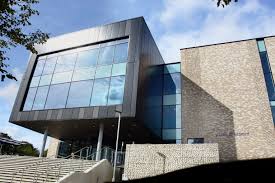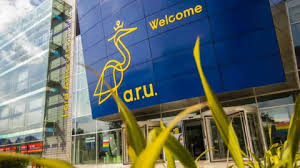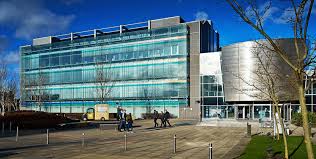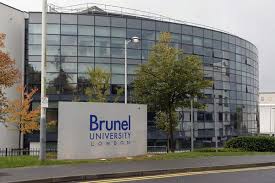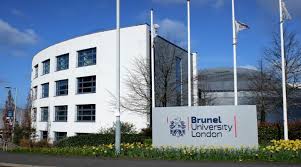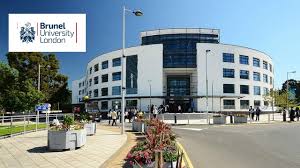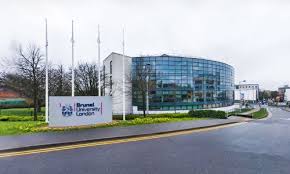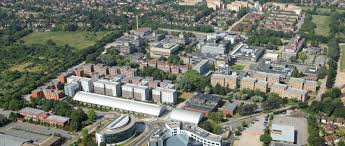University of Oxford Medical Sciences Division and Collegiate Structure (Detailed Version)
The University of Oxford is a globally recognized institution that is famous for its distinctive collegiate system and academic excellence. It is an independent and self-governing organization consisting of the central University, four academic divisions—of which the Medical Sciences Division is one—along with different departments, faculties, and 36 colleges and three university-affiliated societies.
About University of Oxford Medical Sciences Division
Oxford’s collegiate organization is intrinsic to its operation. Each college is a self-governing unit possessing its own separate governance, administration, and financial burden. The colleges are operated through royal charters approved by the Privy Council and have a Head of House—a person appointed and elected by the college’s Governing Body, which is principally composed of Fellows, several of whom also have academic positions in the University.
By contrast, the three university societies—Kellogg College, Reuben College, and St Cross College—are structured like colleges but are not royal charter colleges. Rather, they are acknowledged as departments of the University. Their Heads (Presidents) are appointed by the University Council on the recommendations of their respective governing bodies.Moreover, Oxford has four Permanent Private Halls (PPHs), which were established by Christian religious denominations.
University of Oxford Medical Sciences Division – Table of Contents
- About
- Advantages
- Ranking
- Departments And Course Duration
- Facilities And Infrastructure
- Required Documents
- Eligibility Criteria
- Admission Process
- Benefits
- Privileges and Benefits for Indian Students
- FAQ’s
These halls maintain a religious atmosphere and provide spiritual as well as academic life to their students.32 of the colleges and PPHs admit undergraduates. All the colleges welcome applications from mature students, who are those aged 21 or above at the beginning of their course. One college, Harris Manchester, is actually devoted to mature students. Colleges like Green Templeton, Kellogg, Linacre, Nuffield, Reuben, St Antony’s, St Cross, and Wolfson are, however, purely postgraduate colleges.
All Souls College is unique in that it does not accept students at all; its society consists only of Fellows and its Warden. Of Oxford’s colleges, University College, Balliol College, and Merton College are the most ancient, all three having been established in the 13th century. The latest additions are Green Templeton College—created in 2008 through the amalgamation of Green and Templeton Colleges—and Reuben College, created by the University in 2019.
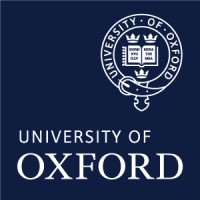
Role of Colleges, Societies, and the Central University
The colleges, societies, and permanent private halls have a crucial and individualized role to play in the life of an Oxford student:
They are accountable for admitting undergraduates and for contributing to the selection of postgraduates after university admission.
They provide residence, catering, social and sports facilities, common rooms, libraries, and pastoral care.
To undergraduates, they administer tutorial teaching, which is a distinguishing feature of the Oxford system of education, and the administration of student welfare.
The central University of Oxford has responsibility for the more general academic and administrative affairs:
It plans the curricula, schedules lectures, seminars, and laboratory instruction interdepartmentally and interdivisionally.
It offers far-reaching academic facilities such as world-class libraries, laboratories, museums, and computer services.
Postgraduate admissions and supervision are also administered by the University, and student dissertations and theses are evaluated, examinations are taken, and degrees awarded finally.
Academic Divisions and Other Departments
The University is divided into four academic divisions: Medical Sciences, Mathematical, Physical and Life Sciences (MPLS), Humanities, and Social Sciences. Each division contains many departments, faculties, and research centers.
The Medical Sciences Division, especially, is renowned around the world for its contribution to biomedical research, clinical training, and medical education.
Several famous institutions and departments are housed at Oxford as well:
Oxford University Press (OUP)—one of the largest and most prestigious academic publishers in the world—is a university department.
The Department for Continuing Education provides part-time and flexible learning to students across the globe, stretching Oxford’s presence beyond classical full-time academic channels.
The GLAM institutions (Gardens, Libraries, and Museums) are integral to the University’s teaching and research environment.
Advantages of Studying at the University of Oxford Medical Sciences Division
World-Class Facilities and Educational Materials
The Division of Medical Sciences provides state-of-the-art facilities such as world-class research laboratories, cutting-edge teaching facilities, and large medical libraries.
Students also enjoy access to the university’s wide resources like the Bodleian Libraries, prestigious museums, galleries, and thorough digital archives.
Instruction from Global Experts and Diverse Research Opportunities
Students are instructed by world-class academics and clinicians who are themselves engaged in pioneering biomedical research.
Research opportunities enable students to implement scientific principles in real-life medical problems, maximizing learning and experience.
Personalized Instruction and Whole-Student Support
Oxford’s distinctive tutorial system guarantees students receive personal academic guidance and attention.
Colleges offer excellent pastoral care and mentoring, promoting a positive and collaborative learning environment.
Focus on Transferable Skills and Critical Thinking
The curriculum reinforces rigorous analytical thought, scientific skepticism, and problem-solving.
The students are given training in transferable skills such as communication, teamwork, and leadership that prove useful across different careers.
A Varied and Stimulating Student Life
The collegiate system in Oxford provides an extensive social experience with a full variety of extracurricular activities such as sports, drama, music, and student society.
College events and traditions help create a stimulating and diverse community.
Cultural and Historical Enrichment
Oxford, as the place to study, is a city that is rich in history and culture, providing exposure to historical sites, libraries, theatres, and academic activities.
The city contributes to the enhancement of both academic and personal development by the unique environment.
Wide Range of Graduate Programs
The division offers a number of postgraduate programs, such as the highly valued DPhil (PhD) programs, providing specialist training in the clinical and biomedical sciences.
These courses qualify students for impactful professions in medicine, healthcare, or biomedical enterprises.
International Renown and Highest Academic Rankings
The University of Oxford is traditionally one of the best universities worldwide in medicine and medical sciences.
Its Medical Sciences Division is ranked among the international elite for scholarship, innovation, and research yield.
Excellent Career Opportunities
Employment prospects of graduates from medical courses at Oxford are high with a significant portion finding employment or continuing study soon after graduation.
The University’s strong alumni base and reputation also improve career opportunities for job placement and career advancement.
Latest Notifications:
University of Oxford Medical Sciences Division – Ranking
The University of Oxford has again reaffirmed its global academic supremacy by topping the Times Higher Education (THE) Subject Rankings in both Medicine and Computer Science. It is the 14th time in a row that Oxford is ranked first in Medicine and the 7th in Computer Science.
The Times Higher Education World University Rankings are one of the most respected assessments of academic excellence, based on a broad range of indicators including research impact, teaching quality, and international collaboration. Professor Gavin Screaton, Head of Oxford’s Medical Sciences Division, was proud of this ranking, saying it spoke to the staff and students’ unstinting commitment and enthusiasm. He highlighted the Division’s dedication to promoting innovative research and collaborative learning to enhance global health.
The medical rankings include fields such as medicine, dentistry, nursing, and other health sciences, assessing 1,150 institutions across 102 countries based on 18 rigorous performance indicators. Likewise, the first-ranked Oxford Computer Science department, which beat 1,122 institutions across 83 countries, was hailed by its head, Professor Leslie Ann Goldberg, who attributed the achievement to the department’s great students, teachers, and workers. She also noted the significance of this outside endorsement in commending the efforts of the entire department.
All in all, Oxford’s ongoing success in these elite rankings confirms its position as a global leader in education and research, a prime mover in the shaping of future medicine and digital technology.
Departments And Course Duration in University of Oxford Medical Sciences Division
MBBS (BM BCh) at the University of Oxford – Departments & Course Duration
Course Overview
At Oxford, the undergraduate medical degree is known as the Bachelor of Medicine and Bachelor of Surgery – BM BCh. The program is split into two main phases: Pre-Clinical and Clinical.
Course Duration and Structure
- Pre-Clinical Phase
- Conducted at the Medical Sciences Teaching Centre and various departments within the Medical Sciences Division.
- Focuses on the scientific foundations of medicine, including anatomy, physiology, biochemistry, and pathology.
- Culminates in a Bachelor of Arts (BA) in Medical Sciences after the third year.
- Strong emphasis on research skills, academic excellence, and understanding human biology in depth.
- Clinical Phase
- Delivered in partnership with the Oxford University Hospitals NHS Foundation Trust.
- Offers practical clinical training in hospital wards, GP practices, and specialist units.
- Students rotate through various clinical specialties such as medicine, surgery, pediatrics, psychiatry, and general practice.
- On successful completion, students are awarded the BM BCh degree, qualifying them to proceed to the Foundation Programme (UK’s internship/residency equivalent).
Departments Involved
The MBBS (BM BCh) program is supported by a range of departments within the Medical Sciences Division.
- Nuffield Department of Clinical Medicine
- Focuses on infectious diseases, immunology, and internal medicine.
- Nuffield Department of Clinical Neurosciences
- Covers neurology, ophthalmology, and stroke medicine.
- Nuffield Department of Primary Care Health Sciences
- Emphasizes general practice, epidemiology, and patient-centered care.
- Department of Physiology, Anatomy and Genetics
- Provides foundational scientific teaching in human biology.
- Department of Biochemistry
- Offers in-depth insight into molecular mechanisms in health and disease.
- Department of Experimental Psychology
- Supports modules on neuropsychology and human behavior.
- Nuffield Department of Surgical Sciences
- Covers surgical training and academic surgery.
- Department of Oncology & Department of Paediatrics
- Supports teaching in specialized fields like cancer and child health.
- Department of Psychiatry
- Provides comprehensive training in mental health and psychological medicine.
Latest Updates:
Facilities And Infrastructure at University of Oxford Medical Sciences Division
1. Academic & Research Facilities
-
Libraries:
-
-
- Radcliffe Science Library (RSL): One of the UK’s largest science libraries, offering medical textbooks, e-journals, and research databases.
- College Libraries: Each college has its own medical/science section (e.g., Christ Church, Magdalen, St John’s).
- Bodleian Libraries: Access to over 13 million printed works, including rare medical archives.
-
-
Laboratories & Research Centers:
-
-
- Welcome Trust Centre for Human Genetics: Advanced genomics and biomedical research labs.
- Kennedy Institute of Rheumatology: Cutting-edge immunology and inflammation research.
- Teaching Labs: Modern anatomy dissection rooms, simulation suites, and biochemistry labs.
-
-
Teaching Hospitals:
-
- John Radcliffe Hospital (JR): Primary clinical training site with specialized wards, A&E, and simulation centers.
- Churchill Hospital: Oncology, renal medicine, and transplant surgery facilities.
- Nuffield Orthopaedic Centre: Musculoskeletal and sports medicine training.
2. College Infrastructure (Accommodation & Living)
-
Hostels & Accommodation:
-
-
- College Housing: Guaranteed accommodation for undergraduates (3–4 years) and some postgraduates. Options range from historic buildings (e.g., Merton College’s 13th-century rooms) to modern en-suite flats.
- Graduate Housing: Dedicated residences like Goodman Building (Green Templeton College).
- Cost: Varies by college (~£1,000–£1,800/month, including meals).
-
-
Dining & Canteens:
-
- College Halls: Formal dinners (“Formal Hall”) and casual dining (e.g., St Anne’s College’s modern cafeteria).
- University Club: Staff/student restaurant with affordable meals.
3. Technology & Innovation
- Virtual Learning: Access to Canvas (Oxford’s online learning platform) and digital anatomy tools like AnatomyTV.
- Simulation Suites: High-fidelity manikins and VR surgical training at the Oxford Simulation, Teaching, and Research (OxSTaR) Centre.
- 3D Printing & Imaging: Facilities for biomedical modeling at the Big Data Institute.
4. Sports & Recreation
-
Sports Facilities:
-
-
- Iffley Road Sports Centre: Olympic-sized pool, gym, squash courts, and rowing tanks.
- University Parks: Football, cricket, and rugby grounds.
- College Teams: Rowing (famous Boat Race), hockey, and tennis.
-
-
Extracurricular Activities:
-
- Medical Societies: Oxford University Medical Society (OUMS) hosts talks, workshops, and networking events.
- Music & Arts: College choirs, drama clubs (e.g., Oxford University Dramatic Society), and art studios.
- Volunteering: Opportunities with Oxford Hospitals Charity or global health initiatives.
5. Student Support & Wellbeing
- Healthcare: Access to the University Health Centre and college nurses.
- Mental Health: Counseling services via the Oxford Student Union.
- Disabled Access: Adapted labs, lecture halls, and accommodations.
6. Unique Features
- Medical Museums: History of Science Museum (featuring rare surgical instruments).
- Entrepreneurship: Oxford Foundry supports med-tech startups.
- Partnerships with hospitals in the UK, Africa, and Asia for electives.
Official site For University of Oxford Medical Sciences Division: Click Here
Required Documents For Admission in University of Oxford Medical Sciences Division
- Original birth Certificate
- Copy of a valid passport
- NEET Scorecard
- CV (if required)
- Statement of Purpose
- Reference letter(s)
- Certificate of English proficiency test – IELTS/TOEFL/C1 Advanced
- Financial Documents as Proof of financial ability
- Academic transcription or proof of your previous academic
- Transfer certificate
- Photocopy of IELTS/UKCAT/BMAT scores
- A personal statement that illustrates why you’re coming to the UK.
Eligibility Criteria For University of Oxford Medical Sciences Division
- Pass 10+2 exam with PCB as main subject.
- Qualify NEET UG Exam.
- Clear UCAT & BMAT Medical Entrance Exam in the UK.
- Submit a certificate of IELTS or TOEFL.
- Migration certificate.
- Valid passport.
- Passports size photographs.
- Candidate VISA.
Admission Process For University of Oxford Medical Sciences Division
- Complete the Online Application
Begin by filling out the online application form through the official University of Oxford website or relevant UCAS portal. - Submit Printed Application and Supporting Documents
Print and sign the completed application form. Send it along with all required academic and personal documents to the university by post if instructed. - Email Scanned Copies of Documents
Email clear, scanned copies of your documents to the admissions office. Use the subject line: “Application for Admission”. - Ensure Timely Submission
Make sure all parts of the application, including both physical and digital submissions, are completed before the specified deadline. - Application Assessment and Decision
The admissions team will assess your application. You will receive an offer or rejection letter based on your academic qualifications and interview. - Pay Required Fees Upon Acceptance
If offered admission, you must pay the initial tuition deposit or fees to confirm your place. An official acknowledgment or Confirmation of Acceptance for Studies (CAS) will follow. - Document Verification and Legalization
Complete all necessary processes such as translation, notarization, apostille, and attestation of your academic documents as per visa requirements. - Apply for a Student Visa
After acceptance, apply for a student visa using the university-issued CAS or Invitation Letter to support your application.
Get More Details About The Colleges in UK: Click Here
Benefits of Studying at the University of Oxford Medical Sciences Division
- Global Reputation and Prestige
- Ranked 1st in the world for Medicine by Times Higher Education for the 14th consecutive year.
- Recognized globally for academic excellence, innovation, and impactful research.
- Cutting-Edge Research Opportunities
- Home to world-leading biomedical research centers.
- Students actively participate in groundbreaking research projects, often co-authoring scientific publications.
- Individualized and High-Quality Teaching
- Oxford’s unique tutorial system offers personalized academic support and deep learning experiences.
- Teaching by renowned faculty and subject experts in small group settings.
- Exceptional Resources and Facilities
- Access to state-of-the-art laboratories, clinical skills centers, simulation facilities, and libraries.
- The University also offers access to a wide network of museums, digital archives, and scientific databases.
- Comprehensive Student Support and Development
- Holistic support through college-based pastoral care, academic mentoring, and well-being services.
- Dedicated career guidance and personal development resources.
- Rich College Community and Student Life
- Being part of a college offers a strong sense of community, tradition, and belonging.
- Opportunities to participate in clubs, societies, arts, music, drama, and sports.
Strong Career and Graduate Prospects
- High employability with Oxford medical graduates working in top institutions and hospitals worldwide.
- Exceptional preparation for careers in clinical practice, research, academia, and global health leadership.
- International Collaboration and Exposure
- Oxford maintains partnerships with top medical schools and hospitals around the globe.
- Students benefit from global learning experiences and diverse cultural interactions.
- Scholarships and Funding Opportunities
- A wide range of scholarships, bursaries, and financial aid programs are available to support students from all backgrounds.
- Emphasis on Critical Thinking and Innovation
- Curriculum designed to enhance critical analysis, ethical reasoning, and problem-solving—essential for future medical professionals.
Privileges and Benefits for Indian Students at University of Oxford Medical Sciences Division
International Prestige & Global Recognition
An Oxford degree is recognized worldwide and highly sought after, providing Indian students with a competitive advantage in medical and academic professional lives globally.
Scholarships and Financial Aid
Indian students may apply for highly prestigious scholarships like:
- Rhodes Scholarship (one of the world’s oldest and most competitive)
- Clarendon Fund
- Commonwealth Scholarship
- Felix Scholarship
Several colleges provide bursaries and grants especially to facilitate international and South Asian students.
World-Class Education and Research
Indian students get the best teaching, access to state-of-the-art research, and individual tutorials by some of the finest brains in medical science.
Advanced Learning Facilities
Facilities to learn in world-class labs, libraries, medical museums, simulation centers, and digital learning resources that contribute to theoretical and practical knowledge.
Diverse and Inclusive Environment
Oxford has a large and increasing Indian student population, providing a warm and culturally diverse environment.
Indian cultural societies stage festivals such as Diwali, Holi, and cultural nights, enabling students to remain connected with their heritage.
Opportunities for Global Networking
Students become part of Oxford’s vast alumni network, including Indian medical leaders, scientists, researchers, and policymakers.
Outstanding Career Opportunities
Indian students graduating from Oxford have excellent employability within the UK and globally, and most go into clinical practice, academia, and health policy.
Accommodation and Support Services
The colleges offer affordable and secure accommodation as well as pastoral care and mental health support that is specific to international students.
Visa and Immigration Support
The University provides comprehensive assistance with Tier 4 (Student) visa applications, preparation of documents, and navigation through the UK immigration process.
Cultural Adaptation and Support
Support centers and orientation programs facilitate easy cultural adaptation of Indian students to the academic and social culture of Oxford.
FAQ’s
What are the eligibility criteria for Indian students?
- Excellent academic records (Class 12 with high marks in Biology, Chemistry, and Physics/Maths)
- Strong performance in entrance exams such as the BMAT (Biomedical Admissions Test)
- Fluent English proficiency (IELTS or TOEFL)
- A well-crafted personal statement and academic references
How competitive is admission to the Medicine program?
Admission is highly competitive, with only a small percentage of applicants accepted. The university looks for academic excellence, strong BMAT scores, relevant experience, and outstanding interviews.
Do Indian students need to attend an interview?
Shortlisted applicants are invited for online interviews, which test logical thinking, scientific curiosity, and problem-solving rather than prior knowledge.
Is accommodation provided to students?
All undergraduate students are guaranteed college accommodation for the duration of their course. Postgraduate students can also apply for college or university housing.
What is the Medical Sciences Division at Oxford?
It is one of the four academic divisions at the University of Oxford, encompassing research and teaching in medical and life sciences, including clinical medicine, physiology, neuroscience, and biochemistry.
Also Check:
